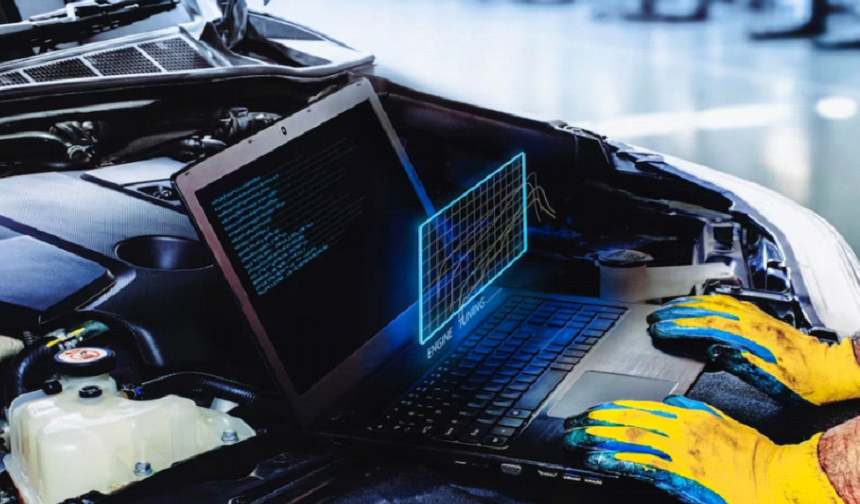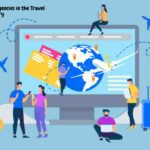Technology has profoundly affected several established industries. Similar to how the Internet of Things and smart appliances are changing home appliances, on-demand content providers are disrupting home entertainment, and electric automobiles or self-driving cars with automotive software are disrupting the automotive industry. Leaders in all sectors, particularly those in the automobile industry, should consider such changes carefully.
Trends in Automotive Industry
The competition between the automotive and technology industries is at an all-time high, with companies vying to stay ahead in this rapidly evolving landscape. For instance, General Motors stated in 2016 that it would work with Lyft to test self-driving taxis after investing $1 billion in Cruise Automation, a self-driving automobile tech start-up. This collaboration showcased the growing importance of automotive software development services in enabling autonomous driving capabilities. Similarly, in March 2022, Sony announced a well-planned partnership with Honda Motors to create high-value. These battery-powered cars will likely be on the road by 2025, highlighting the integration of advanced software systems within future vehicles. A further announcement on Xiaomi’s entrance into the market for smart EVs was made in March 2021, signifying the expansion of automotive software development services to facilitate the production of intelligent electric vehicles. Currently, an average automobile has 90% hardware and 10% software.
However, according to industry forecasts, the share of hardware will decrease to 40%, with the remaining amount split between software (about 40%) and content (about 20%). According to automotive experts, the collaboration will be essential as manufacturers fight to retain their growth in this disruptive period. Let’s discuss how the auto industry may reduce the percentage of hardware used in cars from 90% to 40%.
Changing Consumer Behaviour
The emergence of the internet and social media throughout the digital age gave the informed customer more power.
A dramatic shift in consumer behavior will change the industry’s revenue model and value chain as the automotive digital revolution advances. Current and potential auto enthusiasts are interested in exploring and personalizing their automobiles utilizing immersive technologies like virtual and artificial reality. Premium companies must go beyond following industry-wide initiatives to provide such experiences; they must take the initiative or risk losing a key element of their brand’s cachet.
To predict and improve automobile service, the industry will continually capture and swiftly evaluate vast data on driving behavior, road conditions, and other aspects.
As the automobile sector undergoes a digital transition, consumer expectations and behavior will continue to change. More than ever, keeping current and one step ahead of the competition is essential.
Time Spent Driving
The amount of time spent in cars while driving is the first notable shift in the automobile sector. People already spend a lot of time in their automobiles: According to estimates from the AAA Foundation, US drivers log more than 290 hours of driving time a year, or about 6-7 hours per licensed driver each week. But as driverless cars become more prevalent, the number will likely fall dramatically. The reasoning is straightforward: as automobile technology advances into self-driving cars with 40% hardware, individuals will have more time to do other chores while traveling. By the end of 2030, travelers might benefit from up to 1.9 trillion minutes of leisure time thanks to self-driving technology, according to AT Kearney.
Expanding Mobility-as-a-Service
The development of mobility-as-a-service is the other significant shift in consumer behavior brought about by autonomous cars. It alludes to moving away from privately owned automobiles and using on-demand mobility alternatives. Car ownership has evolved from a status symbol to a necessity. Self-driving cars will hasten this tendency even further.
Adapting Automobile Ownership Trends
With the advancement of automotive technology, consumer perception of automobiles is changing, increasing the need for businesses and enterprises. As mobility evolves from a lifestyle item to a utility and need, even people who desire their vehicle are more inclined to lease than to purchase one altogether.
This transition from ownership to consumption is accelerated by urbanization. For instance, many believe taking a taxi is preferable to investing in a luxury automobile and traveling.
A New Value Chain
The automobile industry is likely to change from an OEM-led value chain to a “technology stack” that, in many respects, resembles what has been occurring in the computer sector. Three categories will be used to categorize the automobile business.
Hardware providers: Creating the actual car parts
Software providers: developing connection and fleet management features and smart automobile software.
Applications: This will use hardware and software to provide clients with the finest service and experience.
According to Morgan Stanley’s projection, the value chain will comprise 60% software and application layers and 40% hardware suppliers, down dramatically from 90% to 40%. Hardware providers must respond to this issue and change as a result. According to strategy and projections, hardware businesses’ revenue share will degrade, and their portion of industry profits will fall even more sharply.
What Can We Do to Change the Future?
The OEMs will attempt to penetrate the software and apps layer to remain relevant in the age of self-driving vehicle technology since there is a high likelihood that the hardware revenue share will see a long-term drop.
To ensure that the integration of the hardware or software used in the automotive sector is carried out as seamlessly as possible, collaborate with all technology businesses producing OS solutions.Concurrently pursue hardware improvement and application development. Choose the appropriate personnel to go smoothly from 90% hardware to 40% hardware.
Future Business Prospects
The automotive sector will have a big impact on how companies of all sizes expand in the future, especially in the areas of digital development, modernization of IT infrastructure, and data exploitation.
Businesses using this technology provide their workers with a fulfilling and stimulating work environment.
New jobs will be created, and individuals in various technological sectors, such as artificial intelligence, deep learning, and machine learning, will be trained due to future automotive technology. Not only will the automobile industry be drastically changed by these innovations, but also closely connected industries. To remain competitive in this shifting environment, businesses must adapt and use the knowledge of bespoke software development companies and other tech centers.
These organizations focus on using cutting-edge technology to provide custom software solutions that cater to the particular requirements of the automobile industry. Automotive firms may speed up innovation, improve operational efficiency, and provide outstanding customer experiences by collaborating with a custom software development company in NYC. Businesses and their partners may more easily cooperate and simplify operations with the help of cutting-edge software tools, allowing them to react quickly to market needs and maintain their competitive edge in this ever-evolving sector.
Conclusion
In the automotive software sector, the shift from 90% hardware to 40% hardware will eventually occur; as a result, all parties concerned must be prepared to accept it and search for ways to continue growing.





